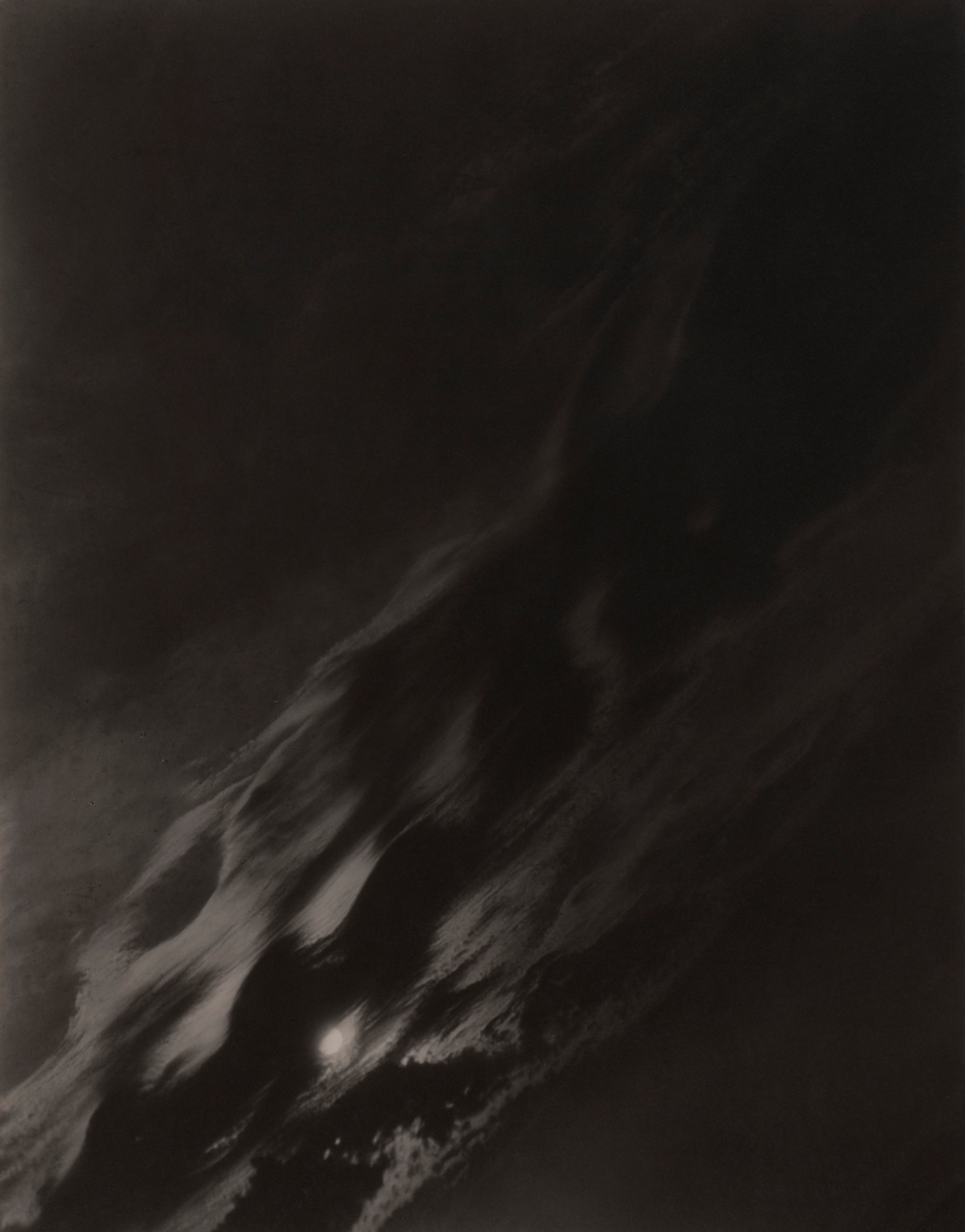
Alfred Stieglitz, regarded by many as the father of American fine art photography, was making remarkable photographs as early as the 1880s. But when he turned his lens skyward to shoot clouds in the 1920s and 1930s, he had a pretty unusual goal in mind: to compose a symphony.
“I wanted a series of photographs,” the New Jersey native wrote in a 1923 issue of The Amateur Photographer & Photography, “which when seen by Ernest Bloch (the great composer) he would exclaim: Music! Music! Man, why that is music!”
Stieglitz didn’t just want his photography to appear symphonic, though. He had for years believed the medium itself was an art form; one that could not only produce beautiful imagery — reminiscent of, say, painting or sculpture — but could convey both an external reality and internal experience.
The resulting series, Equivalents, was revolutionary, and is now recognized as some of the very first abstract modernist art photography. Stieglitz transformed the camera from a slave-like recorder of events to a window through which the transcendent might be experienced. The lyrical shape-shifting of clouds — which seem to have no true structure — served as an external equivalent to changeable human feelings. Stieglitz had, by the standards of his day, photographed the unphotographable.
An exhibition running through March 23 at San Francisco’s Fraenkel Gallery takes that very name, The Unphotographable, and places a piece from Stieglitz’s series at its very heart. Touted by its curators as the chronicling of an alternate history of photography, the show champions images in which direct representation is eschewed for abstraction, obfuscation, and even fraudulence.
Broad in scope, the show allows for images that make quirky bedfellows. Among many greats, there’s also plenty to amuse: The Vision seems like a playful Victorian parlor trick (Oh, look, a ghost!) while the famously disputed Loch Ness Monster still feels like a benevolent joke. Then there’s the surreal: Man Ray’s Primacy of Matter over Thought, where a solarized nude of painter Meret Oppenheim charts how the manipulation of exposure can produce something radically like sculpture. One sees what was once literally unphotographable in the X-ray, Swallowed Coin, Military Hospital, and then there’s the exposure of the nearly-hidden: Christian Marclay’s Silence (The Electric Chair) is a silk screen crop focusing on the sign reading “silence” found in the background of Andy Warhol’s Electric Chair.
“It’s difficult to draw firm lines of what exactly is unphotographable,” Assistant Director of Fraenkel Gallery Darius Himes says, explaining why the exhibition is pitched broadly. “It’s more about the suggestion of looking for something beyond what is there, what is physically tangible.”
Aiming to expand on shows such as 2005’s The Perfect Medium: Photography and the Occult at the Metropolitan Museum of Art and Brought to Light: Photography and the Invisible at the San Francisco Museum of Modern Art in 2008, he adds this is a sort of fleshing out of those concepts. It’s not necessarily comprehensive, but The Unphotographable certainly provides a fascinating potted history of the creative use of the camera.
“There are so many things that aren’t easy to portray,” Himes says. “The role of the artist is to dig into that.”
The Unphotographable runs until Mar. 23, 2013 at Fraenkel Gallery.
More Must-Reads from TIME
- Cybersecurity Experts Are Sounding the Alarm on DOGE
- Meet the 2025 Women of the Year
- The Harsh Truth About Disability Inclusion
- Why Do More Young Adults Have Cancer?
- Colman Domingo Leads With Radical Love
- How to Get Better at Doing Things Alone
- Michelle Zauner Stares Down the Darkness
Contact us at letters@time.com